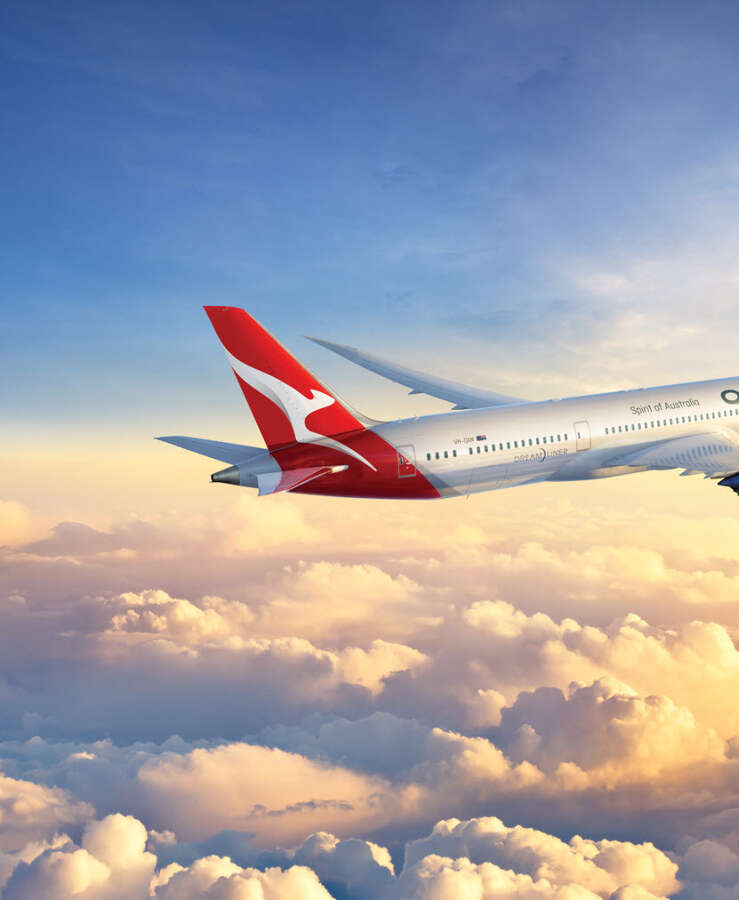
Investing in Carbon Markets FAQs
All your questions about carbon credits with Qantas answered.
What is a carbon credit?
One carbon credit is intended to represent one metric tonne of greenhouse gas emissions avoided, reduced or removed from the atmosphere by an accredited carbon project, commonly referred to as tonnes of carbon dioxide equivalent (tCO2-e).
Why use carbon credits and does it remove the impact of my flight?
Carbon credits do not reduce the emissions of your flight. Purchasing carbon credits allows individuals and businesses to help compensate for a portion of the carbon emissions associated with their activities by providing financial support to carbon projects outside the aviation industry that help to reduce, remove or avoid greenhouse gas emissions in other sectors of the economy.
Supporting carbon projects through the purchase of carbon credits, is not the same as preventing emissions from aviation. While we can calculate the estimated emissions for each route we fly to help determine your contribution, we note that no carbon project can provide a complete guarantee of the permanence of the emissions that a project removes from the atmosphere or a complete guarantee that the emissions avoided by a project's activities would not have occurred without the project. This may mean that your proportional emissions may not be 'offset' in their entirety or in perpetuity.
All carbon projects the Group sources carbon credits from are subject to several layers of scrutiny from global accredited registries for projects based outside of Australia, and the Australian Clean Energy Regulator for Australian projects. Further information on our internal standards for integrity and quality can be found in our 2024 Sustainability Report (PDF)
How do you know these carbon projects are doing what they say they do?
All carbon projects the Group sources carbon credits from are subject to several layers of scrutiny from global accredited registries for projects based outside of Australia, and the Australian Clean Energy Regulator for Australian projects. All carbon credits sourced by the Group must also meet our internal standards for integrity and quality. Further information on our internal standards for integrity and quality can be found in our 2024 Sustainability Report (PDF)
How are flight emissions calculated?
Emissions are calculated using guidance from both domestic and international standards to determine the carbon dioxide emissions equivalent (tCO2e) associated with your flight based on the information available at the time of booking, such as aircraft type, distance of the route and litres of fuel expected to be use based on historical data. The calculation takes into account Scope 3 emissions associated with the flight as well. The key international standards are issued by the International Civil Aviation Organisation (ICAO).
Why can't I choose where my money goes?
To secure a long-term supply of carbon projects that meet our internal requirements for integrity and quality at a consistent price, the Qantas Group purchases credits at an agreed price from an agreed portfolio of accredited projects that are pre-assessed against our internal requirement for integrity and quality.
Does Qantas profit from customer carbon offsetting?
The Voluntary Carbon Program is a not-for-profit program. All customer contributions through the Voluntary Carbon Program go directly to purchasing credits from projects that meet our internal requirements for integrity and quality. Any credits purchased through the Voluntary Carbon Program will not be used by the Qantas Group to count towards meeting our targets or the regulatory requirements.
For further information on offsetting your Qantas flight, view the terms and conditions
How do you assess carbon projects for integrity and quality?
We assess all the projects from which we source carbon credits against our Integrity Framework to ensure these projects meet our internal requirements for integrity and quality, which provides scrutiny that includes:
- purchasing from verified registries,
- due diligence and assurance from suppliers,
- ongoing monitoring and reporting,
- Investment Principles to guide carbon credit procurement, and
- Project Evaluation Framework to assess carbon credits procured against the Investment Principles.
Details of our Carbon Market Strategy and Integrity Framework can be found in our latest Sustainability Report.
Does Qantas use only carbon credits for emissions reductions?
We recognise that climate change is a significant issue for the aviation industry. That’s why we're committed to reducing our net Scope 1 and 2 carbon emissions by 25% by 2030 (from 2019 levels) and achieving net zero emissions by 2050.
Aviation is a hard-to-abate sector and carbon credit projects that meet our internal requirements for integrity and quality will play an ongoing role in helping us to achieve our goals, even as alternate direct emissions reduction levers (such as sustainable aviation fuel, more fuel-efficient fleets, and emerging technologies) become more readily available, in order to address our residual emissions.
The Climate Active program is currently being reviewed following public consultation in 2023 on the future direction of the program.